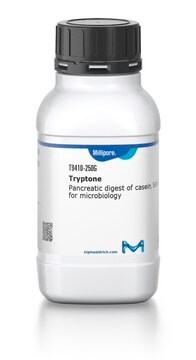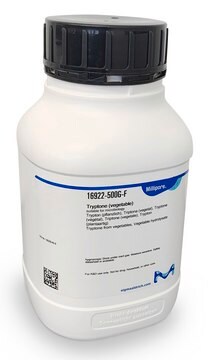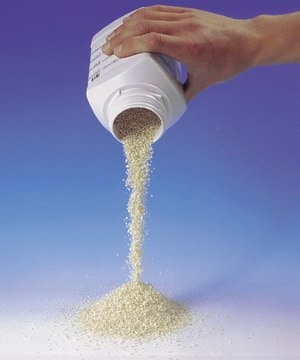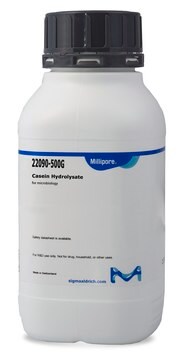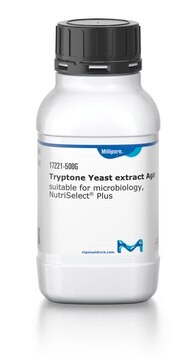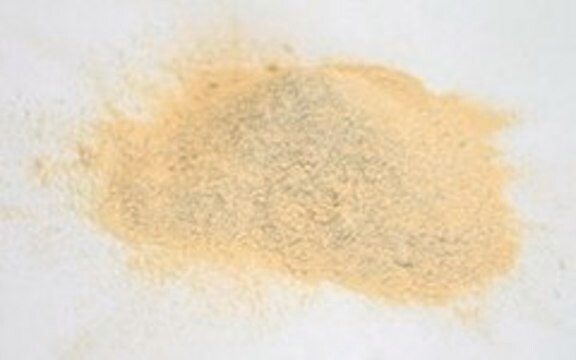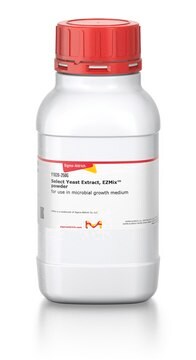T7293
Tryptone
Microbiologically tested.
Sinónimos:
Peptone from casein, Peptone from casein, Pancreatic digest of casein.
About This Item
Productos recomendados
origen biológico
bovine milk
Nivel de calidad
Formulario
powder
calidad
Microbiologically tested.
envase
bottle of 1 kg
bottle of 250 g
análisis de nitrógeno
11.0-16.0% total
pérdida
≤6% loss on drying
color
light yellow
pH
6.9-7.4
aplicaciones
food and beverages
microbiology
idoneidad
Escherichia coli
Haemophilus spp.
Lactobacillus spp.
Streptococcus spp.
coliforms
¿Está buscando productos similares? Visita Guía de comparación de productos
Categorías relacionadas
Descripción general
Aplicación
- Growth media: Tryptone is frequently used as a source of nutrients in growth media for bacteria, yeast, and other microorganisms. It can be used alone or in combination with other ingredients, such as agar, glucose, and salts, to provide a complete nutrient source for microbial growth
- Enrichment media: Tryptone is often added to enrichment broths to enhance the growth of slow-growing or stressed bacteria in clinical or environmental samples. This is particularly useful for samples where the target microbe is present in low numbers or is difficult to isolate
- Production of recombinant proteins: Tryptone is a component of many bacterial growth media used to produce recombinant proteins. It provides a rich source of amino acids and peptides, which are needed for protein biosynthesis
- It is also used in microbiological testing to determine the minimum inhibitory concentration (MIC) of antimicrobial agents against test organisms.Overall, the diverse and versatile properties of Tryptone make it a valuable tool in various microbiological applications
Nota de preparación
Clase de riesgo para el agua (WGK)
WGK 1
Punto de inflamabilidad (°F)
Not applicable
Punto de inflamabilidad (°C)
Not applicable
Equipo de protección personal
Eyeshields, Gloves, type N95 (US)
Elija entre una de las versiones más recientes:
¿Ya tiene este producto?
Encuentre la documentación para los productos que ha comprado recientemente en la Biblioteca de documentos.
Los clientes también vieron
Nuestro equipo de científicos tiene experiencia en todas las áreas de investigación: Ciencias de la vida, Ciencia de los materiales, Síntesis química, Cromatografía, Analítica y muchas otras.
Póngase en contacto con el Servicio técnico